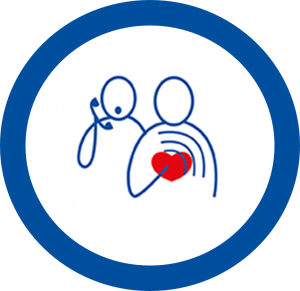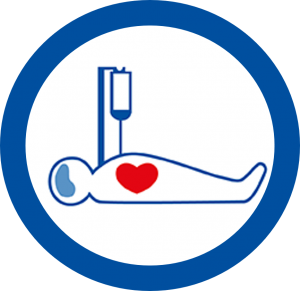*Chain of Survival*

If a casualty suffers a cardiac arrest their heart is no longer moving blood through the body. Brain cells will start to die within 3 to 4 minutes and if no help is given the casualty will die.
The chain of survival is a sequence of steps that should be followed if someone suffers a cardiac arrest.
Promptly following each step in the chain will give the casualty the best chance of survival.
1. Early recognition and call for help
 Remember that brain cells will start to die within minutes of a cardiac arrest so recognising the signs early is vital.
Remember that brain cells will start to die within minutes of a cardiac arrest so recognising the signs early is vital.
It's important that you call for help immediately so that the other links in the chain of survival can take place.
2. Early CPR
 Early and effective CPR is vital to improving cardiac arrest survival. Chest compressions will get the blood pumping and rescue breaths will provide much needed oxygen.
Early and effective CPR is vital to improving cardiac arrest survival. Chest compressions will get the blood pumping and rescue breaths will provide much needed oxygen.
Research shows that early CPR before the ambulance arrives can more than double the survival rate from cardiac arrest.
3. Early defibrillation
 If someone has suffered a cardiac arrest their chances of survival increase dramatically if a defibrillator (AED) is used within the first few minutes.
If someone has suffered a cardiac arrest their chances of survival increase dramatically if a defibrillator (AED) is used within the first few minutes.
Figures published in 2020 by the London Ambulance Service show that when a Public Access Defibrillator (PAD) was used by a bystander and at least one shock was delivered to the casualty, the survival rate was more than five times higher.
4. Post resuscitation care

It is essential that the casualty receives appropriate, advanced post-resuscitation care from the ambulance service and hospital to determine what caused the cardiac arrest, reduce the damage it caused and stabilise the casualty's condition.
